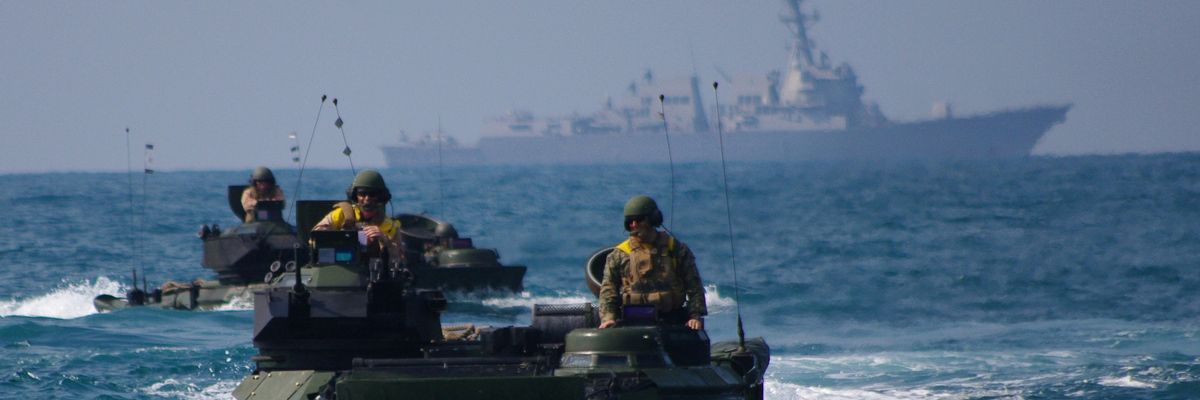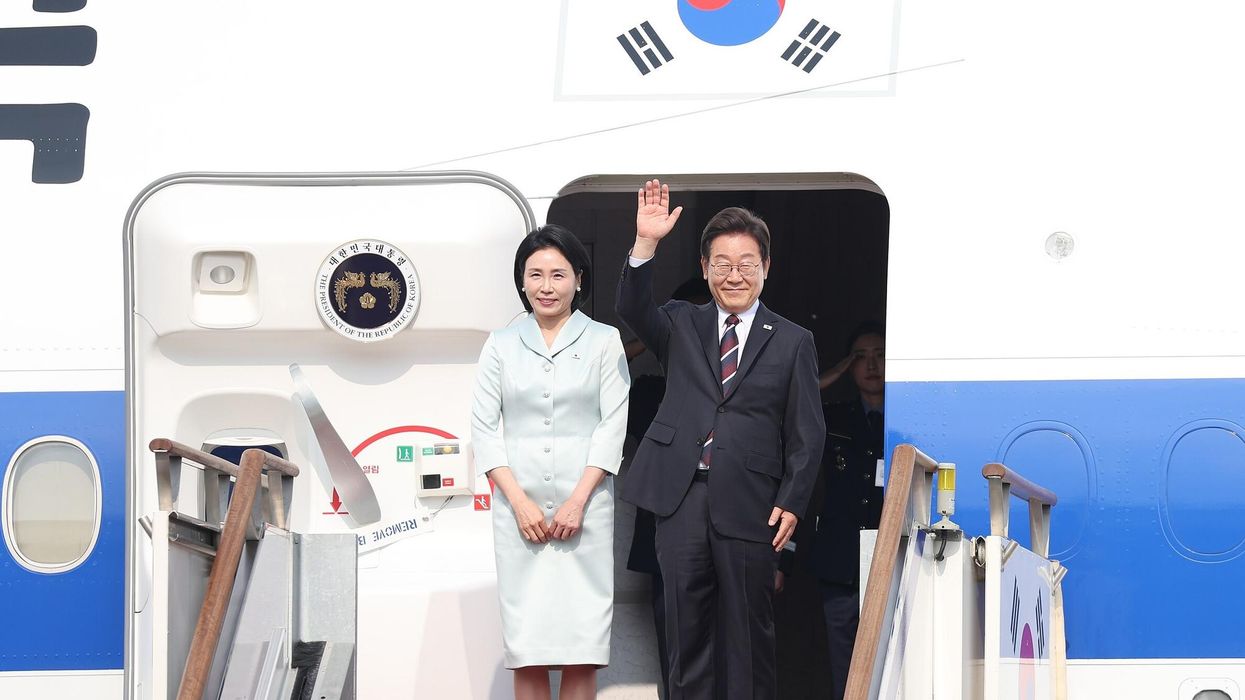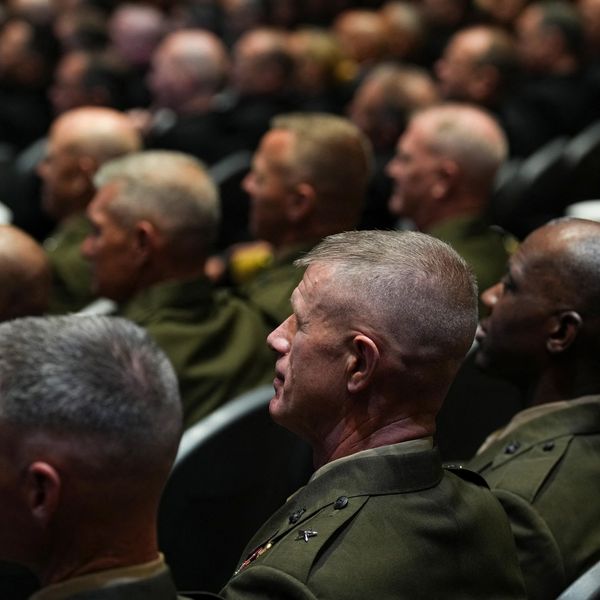Listening to the dialogue in Washington these days about China’s military growth and intimidating behavior in the Western Pacific, one might think that the only way to preserve the peace and prosperity of this vital region is to greatly increase U.S. defense spending and force deployments. Only this can avert a Chinese attack on Taiwan in the near future, it seems.
An increasing number of former U.S. officials and defense analysts are making this argument, which in turn is feeding into strident calls in Congress for billions more in defense outlays, exceeding even what the administration says it needs.
A major new study, just released by the Quincy Institute, argues strongly against this rush to counter China and stabilize Asia by throwing more money at the problem and beefing up U.S. regional force levels across the board.
The nearly 300 page study was written by a heterodox group of 10 specialists, including several former senior U.S. government experts on the defense budget, Indo-Pacific Command forces, and the Chinese military, as well as a former RAND Asia military expert, a nuclear specialist, and several regional security specialists, including yours truly. It also benefits from the views of larger working groups of experts convened by the authors during the drafting process.
In my opinion, the study constitutes the most detailed, rigorous, and balanced assessment of the U.S. defense posture and strategy in Asia in the public realm today.
Entitled Active Denial: A Roadmap to a More Effective, Stabilizing and Sustainable U.S. Defense Strategy in Asia, the report utilizes war games, hands-on experience in force planning and strategizing, and detailed, documentary analysis to produce its likely controversial findings. The report rebuts the idea that more is always better and offense always trumps defense.
In that vein, it argues that stability in Asia can be assured over at least the medium term (to 2035) via a financially more feasible, less escalatory, and more defense-oriented U.S. force posture than is currently presented by various defense analysts, combined with more effective confidence-building measures and crisis management mechanisms with allies and yes, with Beijing as well.
In this way, the report builds on a decade of advocacy for a type of U.S. and allied force posture and strategic approach keyed to the denial of an adversary’s military goals in conflict (as opposed to efforts to gain control over a battlespace), and more extensive reassurance efforts directed at both allies and China.
Unlike those calling for what is in effect some form of reconstituted U.S. military primacy in the Western Pacific, or an alliance-like relationship with Taiwan that would effectively end the U.S. One China policy and move us further toward conflict with Beijing, this study shows that an air- and naval-based denial approach centered on interdicting and disrupting attacking Chinese forces offshore, along with much greater levels of U.S. and allied resilience to Chinese missile attacks and improved Taiwan self-defense capabilities, can get the job done effectively.
Such a less escalatory and provocative force posture would blunt any initial Chinese air and naval attack while facilitating, if necessary, a subsequent U.S. counter-attack using both regional and outside forces. And it would significantly reduce the risk of inadvertent nuclear escalation by avoiding attacks on possible Chinese dual-use conventional/nuclear communications or infrastructure, at least in the early and mid-stages of a conflict.
To achieve these ends will require a significant restructuring of U.S. forces in Asia and beyond, including more light carriers and fewer large carriers, more small surface combatants, greater air force maintenance and ground support capabilities and an accelerated pace of replacement of older combat aircraft, along with sustaining levels of air tanker, transport, and intelligence, surveillance and reconnaissance capabilities.
At the same time, Army and Marine forces should be cut considerably and the remaining forces reconstituted to focus on defense against air and naval attacks. Overall, the U.S. force inventory in the Western Pacific should include more mobile and air- and naval-launched, long- and medium-ranged air defense, and anti-ship capabilities. In addition, to sustain close-in air and naval operations from Japan, Tokyo and Washington will need to invest more in regional basing infrastructure to improve resilience and facilitate the distribution of aircraft into new locations during any conflict.
These changes do not require major increases in U.S. defense spending. In fact, the report estimates that they would likely generate annual savings compared with the last Trump Administration defense plan of around $75 billion (or 10 percent of overall defense spending) by 2035. These savings would result primarily from cuts to the U.S. Army role. In addition, annual savings of as much as $140 billion (or 18 percent of the defense budget) could be achieved if Washington were to accept a significantly less robust capacity to conduct to a second, smaller military operation elsewhere in the world, at the same time it is engaged in a war with China.
Aside from these changes in force structure, defense strategy, and defense spending, an effective active denial posture will also require significant modifications in Washington’s policies and actions designed to reduce tensions and thereby lower China’s incentives to employ force, ensure necessary but less offensive and escalatory types of Japanese support, and improve crisis management and avoidance capabilities.
Rather than continue to focus on a simplistic, U.S. versus China bipolar perspective heavily oriented toward military tools and zero-sum approaches, the study proposes a greater stress on diplomatic, political, and economic aspects of U.S. security policy intended to both ensure support from allies and partners for an active denial strategy and reduce Chinese worst casing of U.S. objectives.
Such non-military policies should strive to encourage more security cooperation among U.S. allies, promote strategic nuclear stability in dialogue with Beijing, reduce the militarization of key hotspots such as the South China Sea and Taiwan, and adopt stabilizing crisis management mechanisms.
Examples of such restraint-oriented initiatives include policies designed to increase the credibility of Washington’s one China policy, deeper Sino-U.S. dialogues on crisis communication involving both military and civilian officials, and a more broad-based dialogue with Beijing on nuclear stability. It could also include Chinese affirmation of the right of commercial and military transit across the South China Sea, in return for a U.S. commitment to reduce the frequency of Freedom of Navigation operations (FONOPs) in the area.
The study argues that, given the above features, U.S. allies and partners should welcome an active denial defense strategy. It would be more credible and economically and politically sustainable then current approaches and be sensitive to the cross-pressures and trade-offs allies and partners face regarding the rise of China.
This innovative, restraint-oriented approach to U.S. defense policies in Asia over the medium term is not a panacea for the security challenges the U.S. and the region face in the Western Pacific. While reducing the chance of conflict and providing a better basis for stability over the next 12-15 years than many of the defense strategies now being touted in Washington, it does not guarantee the absence of crises due to miscalculations or external shocks. Nor does it address possible long-term defense needs that might emerge if tension-reducing initiatives fail and both Beijing and Washington deepen their strategic rivalry.
These possibilities, and the challenges that will inevitably confront the implementation of this active denial strategy, point to the critical importance of political leadership from the U.S. president and secretary of defense. Such leadership is required to overcome the entrenched ideological, bureaucratic, political, and defense-industry interests that keep Washington wedded to the path of upward inertia in budgets and acquisitions, and resistant to more flexible, non-military-centered policy initiatives.
Only through such leadership can the United States implement a more effective defense strategy, coupled with essential diplomatic outreach to allies and partners and to China itself. Such an approach is, in turn, key to preventing and mitigating the dangers of a U.S.–China war.
















